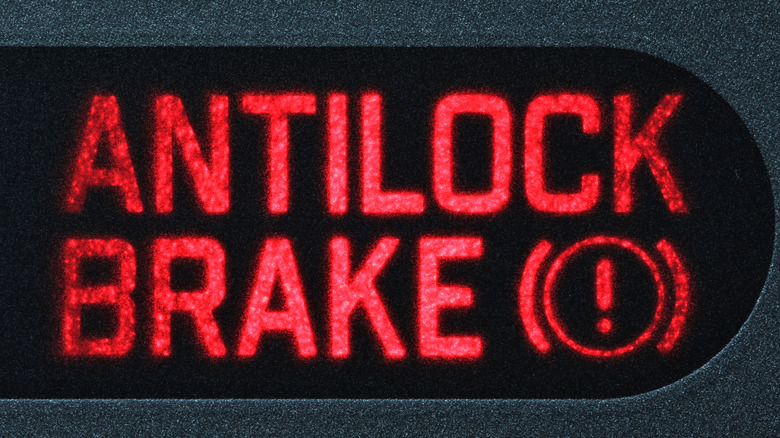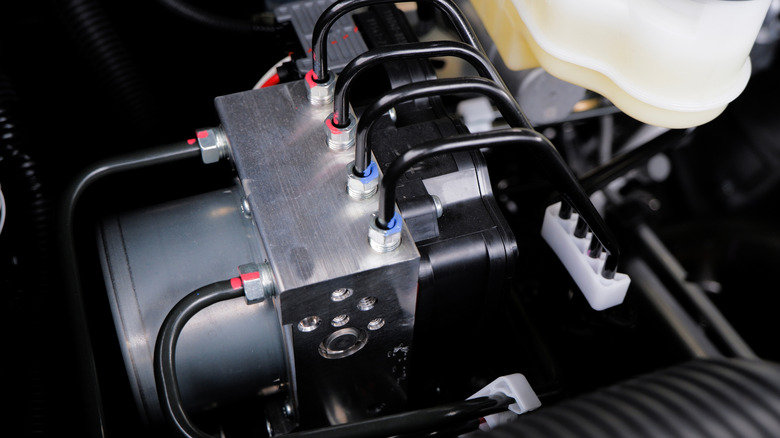How To Tell If Your Vehicle Has Anti-Lock Brakes (ABS)
Since the advent of the automobile age, there have been technological advancements too numerous to recount in this article. But, in terms of improvements, those geared toward keeping drivers safe have arguably been the most important. A case could be made that few were more vital to the safety of those on the roads than the Anti-Lock Braking System.
The feature is, of course, typically referred to as ABS for short and the very first vehicle to utilize anti-lock brakes was the 1978 Mercedes-Benz S-Class, with the legendary automaker developing the tech alongside German outfit, Bosch. The benefits of such a safety measure were immediately clear to virtually every major auto house in the world, with most soon taking moves to outfit their own vehicles with the tech. By 2011, the inclusion of Anti-Lock Braking Systems was federally mandated for all new cars sold in the United States by the NHTSA.
That being the case, it is virtually guaranteed that your vehicle has an Anti-Lock Braking System, assuming it was manufactured in the past couple of decades. But, if you're not willing to bet on your safety, you should be able to determine whether or not your automobile is equipped with ABS by thumbing through the owner's manual (which is no doubt lying forgotten in your glove box). Likewise, most vehicles equipped with ABS have some sort of in-dash light indicating when the feature is active.
How do anti-lock brakes work?
The in-dash light varies based on the vehicle's make, model, and manufacturer, though it'll likely read ABS or Anti-Lock Brake. Likewise, the light will not always be illuminated on your dash. Rather, it will pop up along with other common dashboard lights when you turn your vehicle on, then quickly disappear. That's because it is a warning light meant to alert you to potential issues with your vehicle's Anti-Lock Braking System. As such, if the light does remain illuminated on your dash display, you'll want to visit a garage as soon as possible to ensure the ABS is functioning properly.
That brings us to the question of what, exactly, the ABS does in your car. In the past, drivers were taught to gently pump the vehicle's brakes in heavy-braking situations to ensure the tires would continue to rotate, thus allowing a certain level of steering control that could prove vital in avoiding a collision. While the tactic proved effective, it only worked if the driver could remember to use it in the heat of the moment. In essence, the Anti-Lock Braking System was developed to automatically perform this action in heavy-braking situations so that the driver doesn't need to.
The action is undertaken by a control system that's paired with sensors affixed to every wheel that measures their rotational speed. When a rapid decline in speed is detected, a valve reduces pressure in the brake line to prevent it from locking up, with a pump restoring pressure, which repeatedly continues to ensure navigational control until the vehicle comes to a stop.

